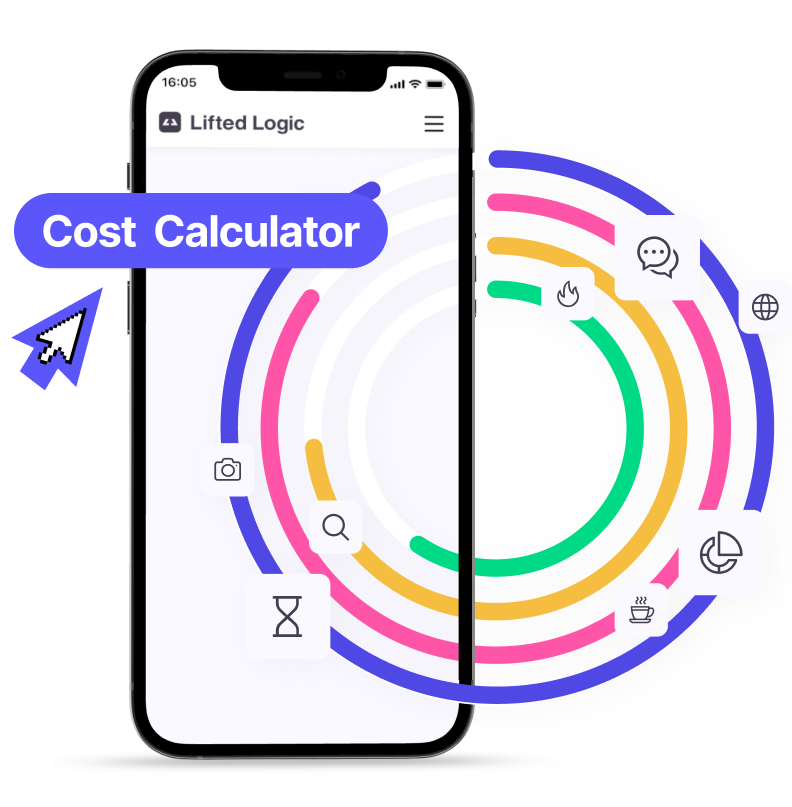Why is feedback so hard?
Many of us have a complex relationship with feedback (I don’t think dysfunctional is too strong a word here). On one hand, we recognize that feedback is great: it’s essential to helping us learn and grow. On the other hand, we recognize that feedback sucks: it can be difficult to deliver (what if he gets mad?) and difficult to receive (what if I’m no good?).
Feedback is a big part of my day-to-day at Lifted Logic. I spend most of my days bouncing between meetings where I’m often expected to “provide feedback” about almost anything: a design, Steve’s job performance, the wifi signal strength, or the placement of an accent rug.
The feedback requirements for those scenarios are obviously quite different; it’s far easier for me to offer feedback about a rug than about Steve’s job performance. Steve has feelings. Rugs, as far as we know, do not.
Simple, right?
Allow me to complicate things a bit. Maybe the rug in question was chosen by Chad. Chad, you learn, is an aspiring interior designer and will interpret my feedback about the rug as actually being feedback about his capacity as an interior designer.
You get the idea. Feedback is hard because it can be fraught, and sometimes problematic. Consequently, many of us would rather not think much about it.
But if we want to be better at the things we do, regardless of what we do at our company or organization, we need to understand feedback in a more nuanced way.
As it happens, one of the most useful ways to think about feedback is to break it down into three main types:
- Appreciation
- Coaching
- Evaluation
The Three Types of Workplace Feedback
The framework I’m presenting here was first popularized by Douglas Stone and Sheila Heen, and later updated by Therese Huston. While this doesn’t solve the tension in our relationship with feedback, it does clarify some important aspects to a feedback conversation. Plus it’s easy to remember and to share with others.
For feedback to be useful, it needs to match the situation and the needs and wants of the recipient.
For instance, let’s say you spend all day preparing a holiday meal for your family. You got recipes for all the family faves–nothing but the hits. You even tried a few new recipes to mix things up because Uncle Tim can’t have gluten anymore. When everyone finally gathers around the table, your Aunt Teresa says, “You know, if you brine the turkey before you bake it, you can get more flavor and it won’t be quite so dry.”
As tears run down your cheeks, Aunt Teresa can be heard muttering, “I was just trying to help.” Deep down, you know Aunt Teresa’s intentions were kind, but still: Wrong time, Aunt Teresa. Wrong feedback. Not helpful.
We can’t fault Aunt Teresa for missing the mark with her feedback. For most of us, feedback is feedback. But a more nuanced approach yields more predictable results. Let’s break it down and see how Aunt Teresa might have been more thoughtful about her approach.
Appreciation
To recognize your hard work and incentivize you to host the holiday dinner again, appreciation is what Aunt Teresa should have been offering at the dinner table. What she should have said is, “Wow, this dinner looks amazing!” or even, “These brussels sprouts are so crispy!”
Appreciation is any type of positive feedback, praise, or recognition that reinforces behaviors. When you offer appreciation, you’re basically saying, “I see what you can do, and I want you to continue doing that!”
If you’re giving feedback to someone (especially unsolicited feedback), appreciation is the best place to start, especially if the work is something outside their normal comfort zone or if they lack confidence (such as when shouldering the responsibility of a traditional family meal). Appreciation can be a significant motivator when someone needs a little nudge to keep going or a fist bump to recognize effort.
Many of us primarily think of appreciation (at least in the workplace) in the context of the “compliment sandwich,” which is bookending critical feedback with praise. As important as it is to employ the compliment sandwich, it’s even more important to find occasions to offer appreciation for its own sake. If you can find opportunities to offer appreciation without any qualification, you should do so–and probably more than you currently are doing.
And when it’s time for the compliment sandwich, you should probably double–or even triple–the amount of appreciation you offer before and after the other things you say. It’s tempting to see the critical or constructive feedback as the most important or salient component of the compliment sandwich (the meat, if you will), but in fact research on positive feedback suggests the opposite: a higher ratio of positive-to-negative feedback leads to better and more productive teams. And it’s probably higher than you think; the highest-performing teams in one study received 5.6 pieces of positive feedback for every 1 criticism. (Some of us have always held that the bread is the most important part of any sandwich, and this is further confirmation.)
It may feel counterintuitive to focus on strengths instead of weaknesses. It may seem that improvement logically follows only after you point out to someone what needs improvement. I get that.
If you’re an expert in something, you have the ability to see nuance in another person’s performance–not only their million tiny mistakes, but also their million tiny triumphs. When you appreciate a colleague’s work, point those things out, help them see the same nuanced success in their work that you see.
If the goal of feedback is learning (and it should be), it’s important to remember that learning happens best when the mind is open and relaxed, and ready to explore and grow. Appreciation is a great way to achieve that mindset.
Coaching
Coaching is feedback that aims to help a person improve their performance in some way, helping them to learn and grow.
Let’s bring Aunt Teresa back into things in a different context, say, a cooking class or a professional kitchen.Her suggestion about brining the turkey could have landed as coaching. After all, she was just trying to help.
A concrete strategy to improve your coaching conversations is to ask more and talk less. Rather than simply offer advice, try to understand the situation from the other person’s point of view. The most successful coaching conversations are just that:conversations. They’re open, trusting, and safe.
And if you’re looking for a way to frame your advice as more of a question, try framing it as curiosity: “I’m curious what would happen if…” and get the other person involved in imagining how things might play out, including ways things might go wrong. This creates a sense of psychological safety around making mistakes.
Evaluation
Evaluation is probably what most of us imagine when we think about feedback: think grades, performance reviews, quarterly evaluations, even health screenings. Evaluative feedback is intended to let you know where you stand, generally by using a rating, a ranking, or a comparative measure of some sort.
At best, evaluative feedback can help us visualize where we are now and what to expect down the line. At worst, when you feel blindsided by strong criticism, evaluative feedback can do a lot of damage. So it’s important to think through how to approach evaluative feedback so that it’s less likely to go wrong.
Let me give you two easy and related strategies.
Strategy 1: Check Ins
The first is to adopt “No surprises” as your personal motto.
If you’re the evaluator, that means you make frequent check-ins part of your routine (rely on the first two types of feedback for those). Frequent check-ins can help ensure that both people are aiming their attention and effort in the same direction. When there’s finally an evaluation conversation, both of you know exactly what the targets are, and so the conversation will feel more like reaching a milestone. It may not be a pleasant conversation, but it won’t be a surprise.
Strategy 2: Check for Understanding
The second strategy is to check for understanding.
Why? Because it’s both kind and probably a good way to ensure that improvement is on the horizon. If you’re telling someone that they aren’t performing well, they might completely shut down; the emotional weight of the letdown isn’t generally a useful precondition for deep listening.
So check for understanding. Before you end the conversation, ask, “We’ve covered a lot in this meeting, and it’s important to me that you’re set up for success. Based on what we just discussed, what are your top three priorities for the next three months?” Just a simple check-in re-establishes your concern for the other person.
Know the feedback you want. Deliver the feedback they expect.
So what do you do with this kind of framework? You can use it to bring some clarity to the feedback conversations on a personal and professional level. Before you ask someone for feedback, explain the type of feedback that you’re looking for. If someone asks you for feedback, clarify with them what type of feedback they’re looking for:
- Appreciation
- Coaching
- Evaluation
Whatever type of feedback you’re offering, remember to include praise for good measure. Use the old “compliment sandwich” but with extra compliments. (Who doesn’t like a little extra love?) And you can feel good about doing it, because research supports offering praise! Good job (in advance) for doing that!
Better feedback improves both the work and the workplace.
At Lifted Logic, we pride ourselves on being a great place to work and great people to work with. Part of that has to do with the way we approach the feedback loops built into our systems. We use thoughtful feedback every day to continually refine our thinking and provide exceptional results for our clients.
Thoughtful feedback is at the core of Lifted Logic’s productive and collegial work environment. If you’re interested in being part of the team, we’d love to meet you!


